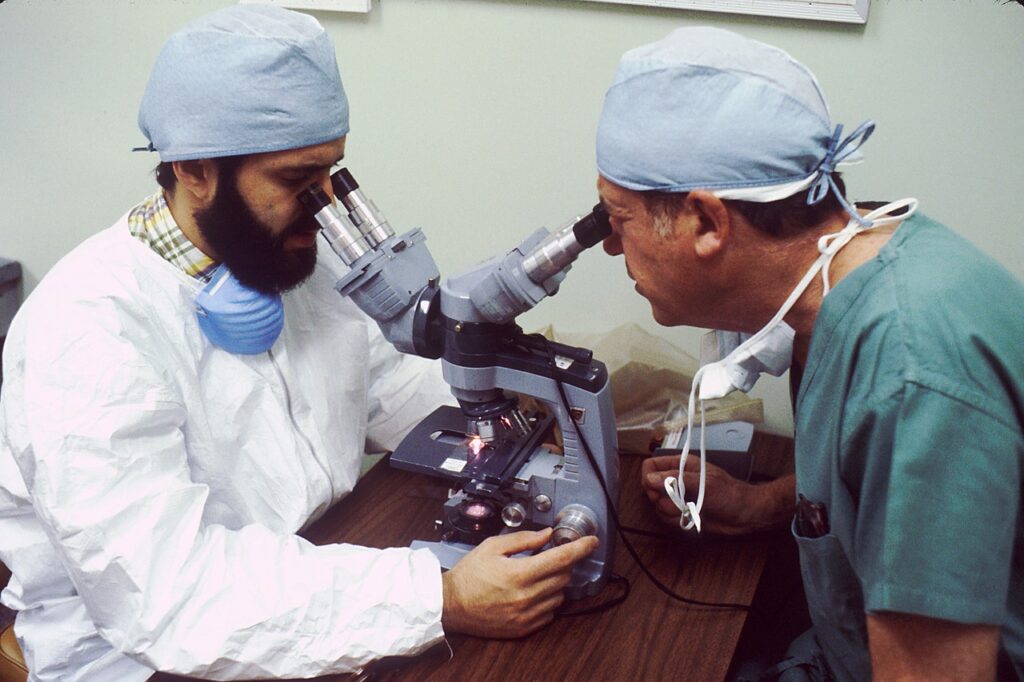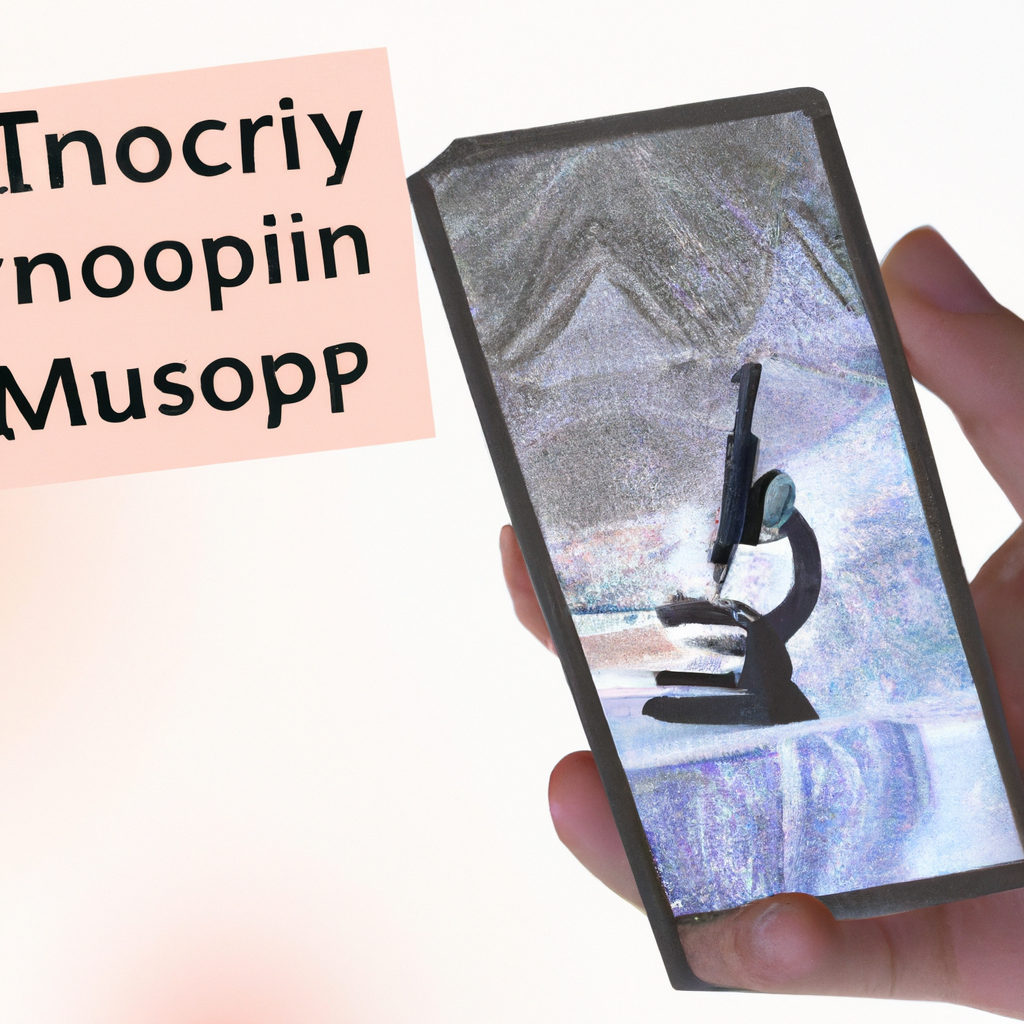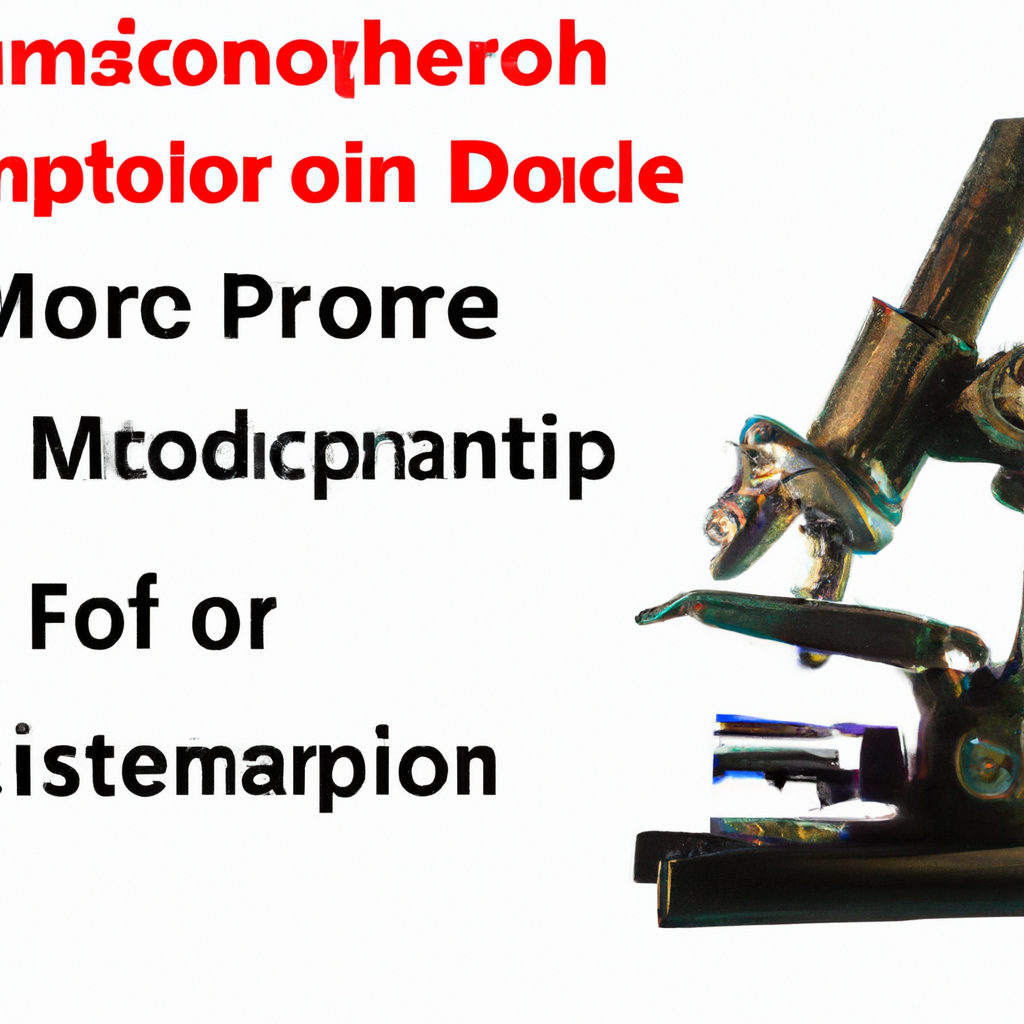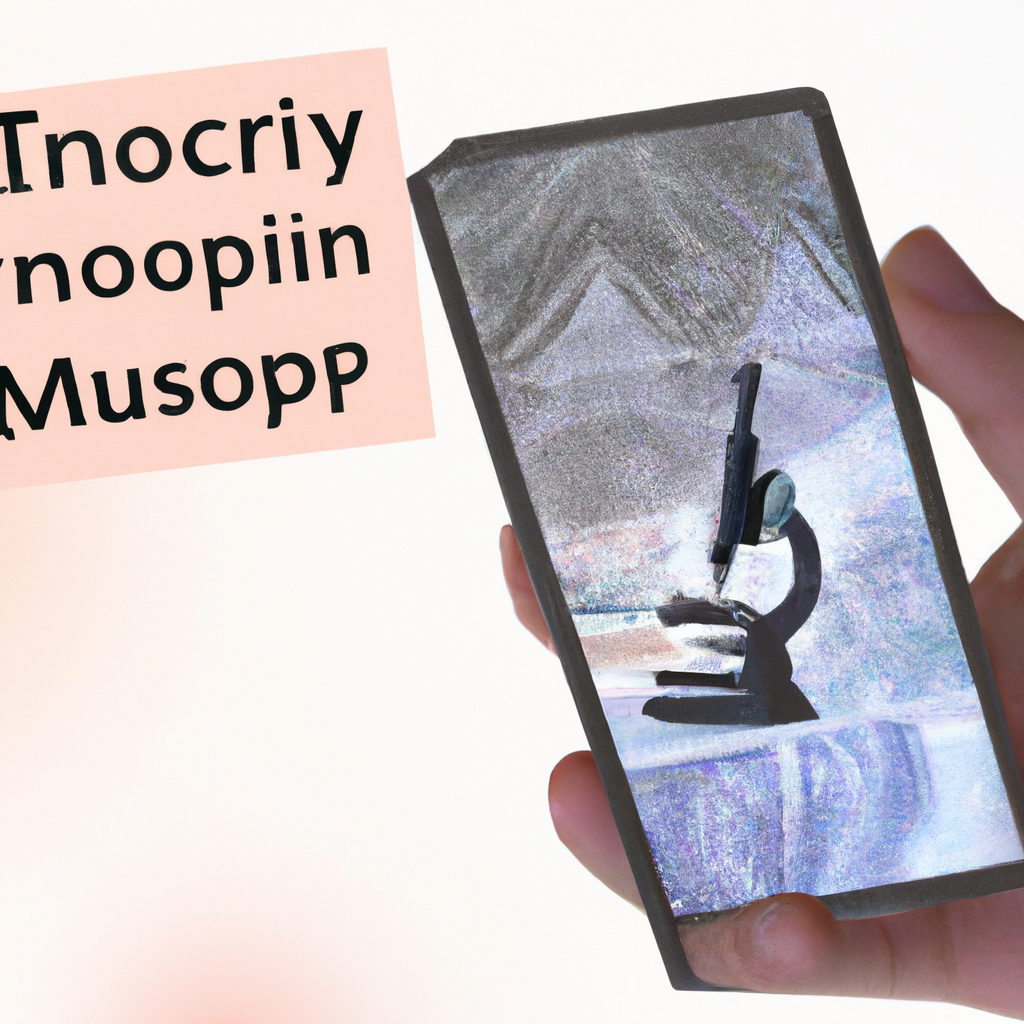Did you know that you can transform your phone into a digital microscope? This amazing technology allows you to magnify tiny objects and discover hidden details that the naked eye simply cannot see. Whether you’re a science enthusiast, a curious explorer, or a student in need of a closer look, there are numerous creative ways to transform your phone into a powerful microscope. In this article, we will explore ten innovative techniques that will open up a whole new world of microscopic wonders right at your fingertips. So grab your phone, put on your detective hat, and let’s embark on this fascinating journey of discovery together!

10 Ways to Turn Your Phone into a Digital Microscope
If you’re fascinated by the microscopic world and want to explore it without investing in an expensive microscope, fear not! Your smartphone can be transformed into a digital microscope with just a few simple tricks and accessories. Whether you’re a hobbyist, a student, or a professional, here are ten ways to turn your phone into a digital microscope and unlock a whole new world of exploration.
1. Explore Macro Lens Attachments
Macro lens attachments are a great way to enhance the magnification capabilities of your smartphone camera. These small lenses clip onto your phone’s camera and allow you to capture stunning close-up images of tiny objects. From examining the intricate details of a flower petal to zooming in on the texture of a coin, macro lens attachments open up a world of microscopic wonders right at your fingertips.
2. DIY Lens Enhancement
Not ready to invest in a macro lens attachment? No problem! You can create a DIY lens enhancement using materials you likely already have at home. By taking a drop of water or a small glass bead and placing it directly on your phone’s camera lens, you can achieve a makeshift macro lens effect. Experiment with different objects and liquids to discover unique and surprising visuals through your DIY lens.
3. Utilize Zooming Capabilities
The zooming capabilities of your smartphone camera can also be extremely helpful when trying to observe tiny details. While it may not offer the same level of magnification as a dedicated microscope, zooming in can provide a closer look at small objects or organisms. Combine zooming with a stable hand or a tripod for even better results. Remember, even small objects can reveal incredible beauty under zoomed-in observations.

4. Apply External Illumination
Good lighting is essential for microscopy, and the same holds true when using your phone as a digital microscope. By attaching external illumination, such as a portable LED light, you can ensure that your subjects are well-lit and that you can capture clear and detailed images or videos. External illumination is particularly useful when observing translucent or reflective objects that may require additional light to highlight their features.
5. Use Apps for Microscopic Analysis
Technology is constantly advancing, and there are now several apps available that can enhance your phone’s microscopy capabilities. These apps use your phone’s camera and offer a range of features, from measuring the size of objects to identifying different species. By utilizing these apps, you can not only capture stunning images but also delve deeper into the microscopic world with analysis tools right on your phone.

6. Employ a Phone Stand or Tripod
Stability is crucial when attempting to capture clear and detailed images through your phone’s camera. A shaky hand can lead to blurry or distorted images that may not accurately represent what you’re trying to observe. To combat this, consider using a phone stand or tripod to steady your phone and keep it at the desired angle. This will help you maintain focus and ensure your observations are accurate and precise.
7. Capture and Record Images and Videos
One of the advantages of using your phone as a digital microscope is the ability to easily capture and record images and videos. Take advantage of this feature to document your observations and discoveries. Not only will you be able to share your findings with others, but you will also create a personal archive of microscopic wonders that you can revisit at any time. You never know what amazing sights you might stumble upon!

8. Optimize Your Phone’s Resolution
To ensure the best possible quality when using your phone as a digital microscope, optimize its resolution settings. Higher resolution will result in sharper and more detailed images. Adjust your phone’s camera settings to the highest resolution possible before you begin your microscopic explorations. This simple step can make a significant difference in the quality of your observations and the satisfaction of your experience.
9. Leverage Image Editing Apps
Once you’ve captured your microscopic images, why not take them to the next level with image editing apps? These apps allow you to enhance the colors, adjust the contrast, and even apply filters to your images. By experimenting with different editing techniques, you can bring out the hidden details and create visually stunning representations of the microscopic world you’ve uncovered. Let your creativity shine!

10. Experiment with Additional Phone Accessories
If you want to further enhance your phone’s digital microscopy capabilities, consider experimenting with additional phone accessories. For example, a polarizing filter can reduce glare from shiny surfaces, while a diffuser can soften harsh lighting. There are also specialized adapters available that allow you to connect your phone to traditional microscopes, offering even greater magnification possibilities. Explore different accessories and find what works best for your specific needs and interests.
In conclusion, unlocking the world of microscopy through your smartphone is an exciting and accessible endeavor. With the ten ways listed above, you can transform your phone into a digital microscope and embark on a journey of discovery. So go ahead, grab your phone, and start exploring the microscopic universe that awaits you. Happy magnifying!




